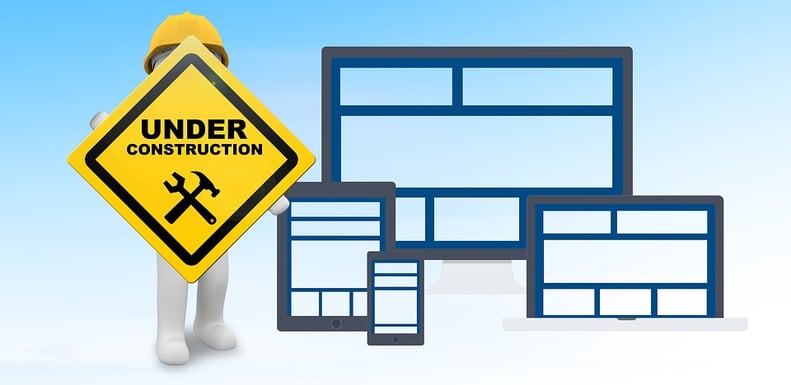
Commissioning management software is one solution to look out for.
If you are a commissioning engineer, manager, project manager, civil engineer or someone in charge of the management of general contractors, you’ll need to report on multiple teams and meet tight schedules. Project commissioning software tools can help you plan the commissioning process right from the project inception instead of waiting until project closeout.
Traditional Deficiency Tracking
Deficiencies and project deliverables on a construction project have traditionally been tracked using paper and excel spreadsheets, they also help efficiently manage active data. Deficiency tracking walk-downs of the equipment are typically performed with the contractor, consultant, and client.
Each stakeholder has an opportunity to conduct construction deficiency tracking and identification during these site walkthroughs. The deficiencies are added to an Excel list, which gives rise to several challenges:
- Who is responsible for correcting each item?
- What is the deadline to fix each item?
- Has each deficiency been inspected to confirm it is closed?
While the spreadsheet is an appropriate management software, even bleeding-edge tech decades ago, the sheer amount of information generated on today's projects makes the old way of managing the work manually with Excel spreadsheets a herculean task that won't help you save time or money.
Furthermore, deficiency tracking, and closeout are challenging tasks, with so many moving parts and many different stakeholders involved. There is often a human error – and missed details morph into bigger problems later in the commissioning process.
Details matter when commissioning projects. A wrong setting, missed cable, or other seemingly minor issue can lead to catastrophic system failure. The graveyard of industrial disasters is littered with ample examples of how missed details can lead to loss of life and severe financial losses. That is why having solid commissioning processes for your commissioning activities is a must.
The Deep Water Horizon oil spill in 2010 is one of the best-known cases, but there are many other more recent examples, such as The 2017 Grenfell Tower Fire in London.
A Better Way to Commission Projects
How do we ensure that every detail is identified and correct leading up to critical on-site commissioning activities? The answer lies in Commissioning Management Software (CMS) and consistent test procedures. These software tools streamline tracking project progress and come with many additional benefits.
As deficiencies are identified, they are added to the CMS with pictures and descriptions of the issue and specification references to determine contractual deficiency. As each deficiency is added to the system, it is categorized and assigned an owner with a due date linked to the project schedule.
This categorization and due date identify every deficiency's importance and the impact if it isn't rectified on time. It becomes obvious who is responsible for addressing the problem and the resolution deadline. Reports run each day, indicating outstanding flaws and the team member accountable for any resulting delays.
This approach holds each member of the project team responsible and helps everyone understand where the critical tasks are and who needs to be taking the next action.
Tracking documentation deliverables is another challenging task on a project. Today's projects generate mountains of paperwork, and a sophisticated method to receive and track all the information is needed.
Like tracking deficiencies, the commissioning management system is used to track receipt of documentation for archival in an organized manner. Each document's deliverable due date is linked to the project schedule, and each deliverable owner is identified.
The project team can run a daily report to determine what documentation is outstanding and the person responsible for submitting it by what date. The CMS efficiently organizes all received documentation to simplify handover to the client at the end of the project.
Projects will continue to become more complex with more details to manage and increased levels of information. The only way to manage all the details and guarantee quality assurance is to leverage the sophisticated tools that exist today to streamline information management.
Without commissioning software tools on your project, the details quickly become overwhelming and cause much bigger issues later in the project.
FTQ360 | A Commissioning Software Tool
FTQ360 is a project commissioning platform to improve and streamline your commissioning process leading up to mechanical completion.
If you want to develop a structured and predictable commissioning process that resolves deficiencies, doesn't solely rely on a punch list and proves compliance to all stakeholders, FTQ360 is the tool you need. Below are some of the features at a glance:
- System Handover: The tool collects, reports, and documents information in an organized form throughout the commissioning process, so you are always ready for a quick and easy closeout.
- Safe Startup with Schedule Certainty: Upfront planning of inspections and tests for specific equipment and systems. Keeping the process on track is baked right into the system.
- Pre-Commissioning and Commissioning Checklists: Commissioning inspections begin with checklist templates, so having a checklists library is vital. FTQ360’s commissioning services software platform comes with a comprehensive and adaptable set of mechanical and electrical checklists.
- Deficiency Tracking and Categorization: FTQ360 ensures efficient deficiency tracking and issue communication in a managed process from identification to resolution.
- Equipment and System Focus: Equipment and systems integrate into every phase of the commissioning process.
- Data and Documentation: FTQ360 comes with a full range of reporting features to give you real-time control of your data. You can upload supporting images, documents, files, scans, and test reports to any inspection or test, including O&M manuals, SWPs, SOPs, as-built drawings, and red-line.
Finally, for such an advanced tool, the learning curve is gentle, and it has a clean user interface. In case you need any help there is an online support library that contains a wealth of up-to-date software organized documentation and training videos.
To learn more about how FTQ360’s commissioning software tools can help you streamline your commissioning process, check out the software's free trial.
![[FREE GUIDE] BETTER QUALITY THOUGH ADVANCED COMMISSIONING](https://no-cache.hubspot.com/cta/default/3353989/fc98d644-68d8-4222-852b-08709cac7136.png)